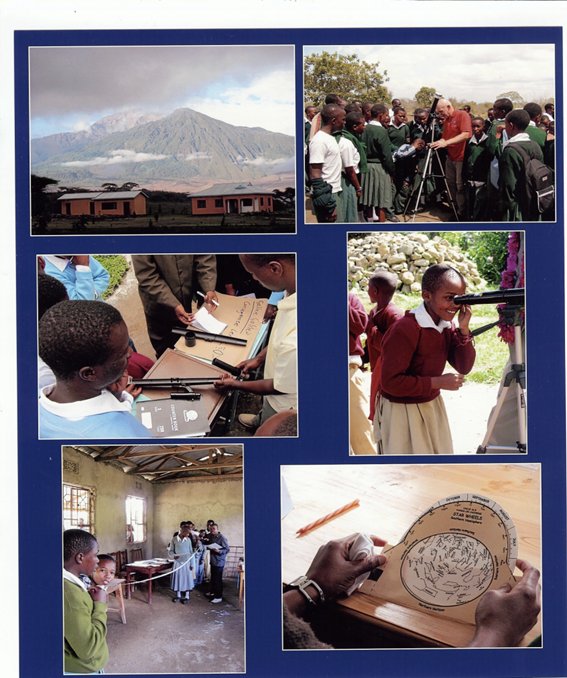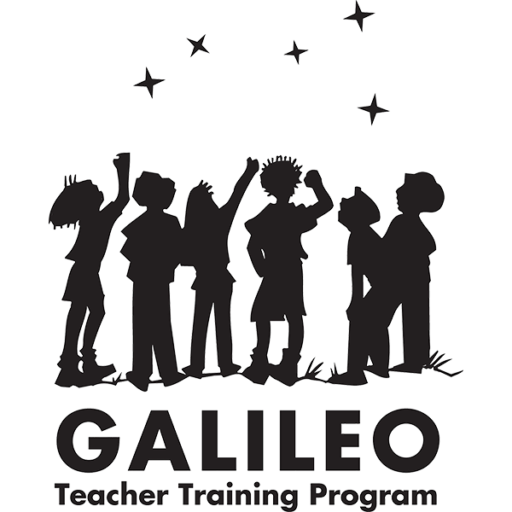Birika!!! That’s the Swahili word used by teachers, students, and community members to name the tea pot asterism in Sagittarius. With dark skies (magnitude 7 on the Great World Wide Star Count chart) it was great fun finding deep sky objects during a month-long teaching experience in northern Tanzania.
In October Chuck Ruehle returned to Africa for a second year of teaching astronomy, optics, and light. He shared his love of astronomy and left almost 250 pounds of equipment and resources with five secondary and two elementary schools on Mt. Meru (4,566 meters). Each of the seven schools received either a 50mm Galileoscope or a 70mm Vixen Space Eye telescope, a tripod, three or four modern eyepieces, and other astronomy related materials. Traveling most of the time by Land Rover, he often lived off the grid between fifteen hundred and three thousand meters while staying in the villages of Kikatiti, Kitefu, Ngarenanyuki, Songoro, and Mulala.
In the secondary schools he worked primarily with the math, physics, chemistry, and geography teachers. At some schools most of the teaching and administrative staff attended his sessions. Over a two day period he typically introduced the resources and teaching materials to the teachers on the first day and part of the second morning. Topics covered included:
Telescope set-up and operation,
Geography: latitude, longitude, and its impact on viewing
Observing the night sky: constellations, sky maps and wheels, moon phases, tides, and eclipse
Observing the sun: solar dynamics, sun spots, solar filters, safety first practices
Optics and light: focal length, lenses, visible light spectrum, prisms, spectra scopes, spectra analysis
Electro-magnetic spectrum; demonstrating radio waves, infrared, ultra-violet, x-ray and gamma ray
Solar system: distance, size, orbits, and composition of the planets
Dark Sky activities: light Pollution and the October Worldwide Star Count
By mid-morning of the second day each of the teachers worked with a small group of students (10-15 per group) presenting some of the teaching material introduced. Chuck moved from group to group, answering questions and assisting the teachers. During the sessions the instructors would often share that they had learned much of the theory about optics, light, and color – but that this was their first opportunity for hands-on experience with equipment like telescopes, lenses, and spectra-scopes. In addition to the resources and teaching tools he left behind Chuck also tried to introduce some hands-on, interactive pedagogical methods to the teachers.
In the afternoon Chuck spent several hours with the teachers debriefing the experience of working with the students, answering questions, reviewing materials, and helping the teachers to consider how to use the resources with students on a regular basis. At some schools their plans included a school-wide astronomy focus for a day once every 4 to 6 weeks, and forming Space Clubs on campus. Whenever the sky was clear teachers and students engaged in solar observing during the day, and star/planet observing at night. (Evening viewing was clouded out early in the month.)
Topics introduced to primary teachers in day- long visits to the schools included
Telescope assembly and usage,
Optics,
Observing the night sky – constellations, sky wheels, moon phases,
Observing the sun – solar dynamics, sun spots, solar filters, safety first practices
Geography and its impact on viewing
Solar system.
In the afternoon teachers worked with students on telescope observing, solar observing, and the orbits of the planets
A critical context for the work involved the current drought/famine situation in the Horn of Africa, including northern Tanzania. Because the rains did not provide sufficient moisture for the crops, shortages of maize and beans have resulted in food prices 3 times the normal rate. Thanks to supporters in the United States, Chuck was able to provide food relief monies to each of the schools and communities he visited.

When he describes the Telescopes to Tanzania program Chuck often repeats a quote from Oscar Wilde who once said, “Ordinary riches can be stolen, real riches cannot. In your soul are infinitely precious things that cannot be taken from you.” Chuck goes on to add that “Something magical, mystical, even spiritual occurs the first time the photons in the eyepiece strike your eye. They stay with you throughout your life – residing in your soul.” The Telescopes to Tanzania project is intended to give instructors and the young people they teach a gift for their soul and — motivation to remain in school, study math and science – and help to build their young nation as they become leaders in their communities.
Since returning, Chuck has stayed in communication with teachers and community members. In addition, he hopes that reports like this one will make it possible for the Telescopes to Tanzania program to take more telescopes, tripods, and astronomy materials to other schools in Tanzania sometime in the next 18 months. He’d like to gather a delegation of four to six astronomers with math and science backgrounds to journey with him.
Thanks for donating money, equipment, and supplies go to: Astronomers Without Borders, Global Hands on Universe, The Galileo Teacher Training Program, Canadian Telescope, Celestron Telescope, American Science and Surplus, Agena AstroProducts, Learning encounters, the NASA EPO group, the European Southern Observatory, the Las Cumbres Global Observatory and Telescope Network, members of the Racine Astronomical Society, the Astronomical Society of Kansas City, several congregations in the Greater Milwaukee Synod (ELCA), the Pan de Cielo Ministry, and individual donors. Special thanks to the 27 individuals who, between June and October, used part of their checked baggage allotment to transport over 165 pounds of equipment and teaching supplies into Tanzania.
Chuck Ruehle, a member of the Racine Astronomical Society, is a retired Evangelical Lutheran Church in America (ELCA) pastor, community organizer, and trainer. He loves to teach adults and young people, especially his five grandchildren, about the beauty of the universe and the night sky from southeastern Wisconsin. He can be reached at Chuck.Ruehle@yahoo.com copyright 2011
